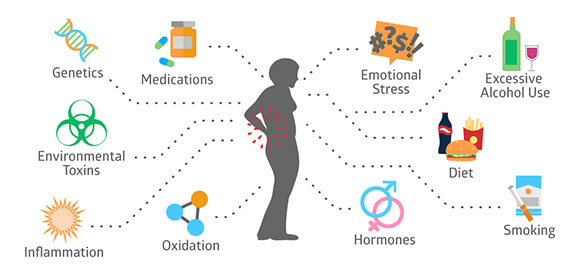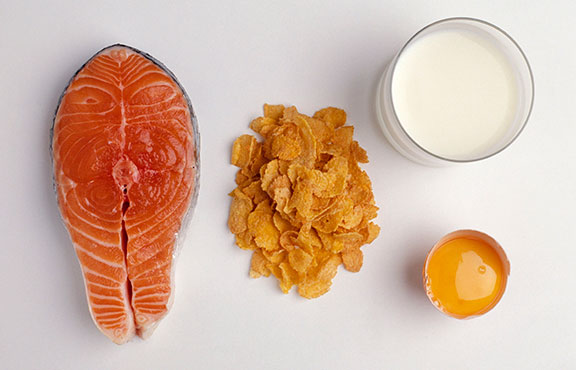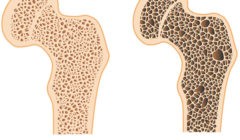Give Me A Break
Osteoporosis is big business in America and rightfully so. Falls with fractures are a leading cause of disability and death. Osteoporosis means “porous bone.” Viewed under a microscope, healthy bone looks like a honeycomb. When osteoporosis occurs, the holes and spaces in the honeycomb are much larger than in healthy bone. Osteoporosis is responsible for two million broken bones and $19 billion in related costs every year. By 2025, experts predict that osteoporosis will be responsible for approximately three million fractures and $25.3 billion in costs annually. Many different underlying conditions cause osteoporosis but the biggest risk factor is advancing age. There are obvious differences in the prevalence of osteoporosis between men and women and different ethnic groups. Asians appear more susceptible than white people who appear more susceptible than black people. Obviously women have a lot more trouble with osteoporosis than men. Osteoporosis is an issue in some very old men but most very old women.

Osteoporosis means “porous bone.” Viewed under a microscope, healthy bone looks like a honeycomb. When osteoporosis occurs, the holes and spaces in the honeycomb are much larger than in healthy bone.
Along the unfortunate causes of osteoporosis are prescription and nonprescription drugs including things like heparin, lithium, methotrexate, anti seizure medicines like Dilantin and phenobarbital, selective serotonin reuptake inhibitors such as Lexapro, Prozac, and Zoloft Proton, pump inhibitors such as Nexium and Prevacid and Prilosec. Also, thyroid hormones in excess and aluminum containing antacids to name a few. Also autoimmune disorders, rheumatoid arthritis, lupus, ankylosing spondylitis and multiple sclerosis of all been associated with osteoporosis. Likewise celiac disease and weight loss surgery have been associated with osteoporosis as well as leukemia, lymphoma, multiple myeloma and sickle cell disease.
Rounding off the list of diseases that can cause osteoporosis include diabetes, hyperparathyroidism, hyperthyroidism, and cushing’s syndrome. Also to blame are menopause and low level of testosterone and estrogen. Strokes, Parkinson’s disease, spinal cord injury and multiple sclerosis as well as depression and eating disorders are also associated with osteoporosis. Finally, chronic obstructive lung disease, chronic kidney disease, organ transplants, post polio syndrome, poor diet and weight loss have also been associated with osteoporosis. Smoking probably is a risk factor for osteoporosis as well.
Now you go to the doctor and have an x-ray done that shows osteoporosis. This is the classic way of evaluating people. You could have an x-ray of your ankle but the best scan to do is the scan the places where the important fractures occur. Dexa scans (the low dose x-ray test to evaluate for osteoporosis) are the ones that I prefer to do because this is where the action is. No one suffers long from a fractured ankle, not the same way people do with a fractured back or broken hip. Since the dangerous fractures occur in the back and in the hip that’s where the testing should be done. It’s an easy, fast and painless test usually covered by insurance.
Now once the doctor establishes a diagnosis of osteoporosis you have options and most of the time that includes taking a bisphosphonate like Fosamax, Actonel, Boniva, or Reclast. You can also use different classes of drugs like Evista or Prolia to treat
osteoporosis. Weight bearing exercises can increase bone density and should always
be recommended.
So there are some high tech drugs that are available to treat thinning bones. Most gynecologists and primary care doctors recommend calcium and vitamin D supplements but the evidence behind this recommendation is very poor and calcium supplementation in particular has not been shown to affect bone health. Go ahead and google it. I wrote to the gynecologist down the street about why he was still recommending calcium supplements and I sent them several articles that addressed the issue but I am still waiting for a response. I regret that doctors today don’t have the time and inclination to educate each other … Its what we used to do before we were so busy filling out those insurance forms or trying to work with the electronic medical records.
I think before you take any prescription meds you would do well to look to the supplements that affect bone health … namely vitamin D and vitamin K2. You have heard of vitamin K but you’re usually thinking of vitamin K1 (phylloquinone), which is found in plants with leafy greens etc. whereas vitamin K2 ( menaquinone ) is found in animal fats and fermented foods but also found in eggs and cheese. I don’t think many people know about vitamin K2. The main function of vitamin K2 is to modify proteins to give them the ability to bind calcium. Multiple studies in vitamin K2 have shown improvements in bone related mineral density. Several of these trials also reported fractures and found that vitamin K2 reduce spinal fractures and hip fractures and all non spinal fractures by a greater amount than any of the other drugs listed above. Vitamin K2 is also produced by bacteria in the large intestine and there is some evidence that repeated antibiotic use can contribute to Vitamin K2 deficiency. Luckily you can buy Vitamin K2 at the drugstore. The U.S. Food and Drug Administration (FDA) has not approved any form of vitamin K for the prevention or treatment of osteoporosis. There simply haven’t been enough trials to inform our recommendations. I would If I had osteoporosis or osteopenia ( a milder form of osteoporosis … call it osteo lite! or pre – osteo )

Osteoporosis means “porous bone.” Viewed under a microscope, healthy bone looks like a honeycomb. When osteoporosis occurs, the holes and spaces in the honeycomb are much larger than in healthy bone.
Regarding vitamin D deficiency; it is rampant. It is very hard to take too much vitamin D despite it being fat-soluble. We see literally hundreds and hundreds of patients with vitamin D deficiency and I have seen no-one with vitamin D toxicity in many years and we check Vitamin D on everyone! I usually recommend at least 5000 international units of vitamin D3 . From the Medical Dictionary “Vitamin D3 is synthesised in the skin after exposure to ultraviolet light; ( sunlight) in contrast, vitamin D2 is obtained only from the diet. Both vitamins D2 and D3 are metabolised to 25-hydroxyvitamin D in the liver, and then to the active 1.25 dihydroxy form in the kidney. Vitamin D has a major role in the intestinal absorption of calcium, bone calcium balance and renal excretion of calcium.” So just being exposed to a lot of sunshine is not sufficient alone to get a therapeutic vitamin D level. Treating vitamin D deficiency should be your first response if you have been told you are osteopenic or osteoporotic. Finally a word on calcium supplements. Calcium is important for bone health but taking calcium supplements has not been proven to be beneficial. I know I get a lot of flak from the gynecologists when I bring this up but trial after trial has failed to demonstrate that calcium supplementation in the form of calcium carbonate etc. has been significantly beneficial to bones. I tell my patients get your calcium from food … broccoli, canned salmon, oranges, almonds etc. not from tablets/pills.
Finally this is holiday time after all … This is the season to get out and enjoy events with friends and family. Why not try the sleigh ride at Highland Forest or try ice skating downtown? I want you to consider two other events. The first is the Solstice at the Cathedral. This event is December 7th-9th at St Paul’s Cathedral downtown. As taken from their website … “Solstice at the Cathedral” is a musical experience celebrating the Winter Solstice – the return of light after the longest night of the year. This special concert features secular music from some of Central New York’s most critically acclaimed performing artists. Collaborations include a mix of pop, jazz, blues, Celtic, and original compositions combined with creative lighting and a state-of-the art sound system to enhance the overall experience.”
Also that same weekend is the Desantis orchestra doing Christmas at the Palace Theatre on Sunday Dec 10th. This is a great show of traditional Christmas music done by local talent young and old alike. You will hear prominent singers and musicians and be introduced to some rising star’s at a traditional Christmas setting and what a great way to start the month of December. Next year we will continue to challenge you about your health. Until then … get well and stay well. Happy Holidays. Joe Barry MD











